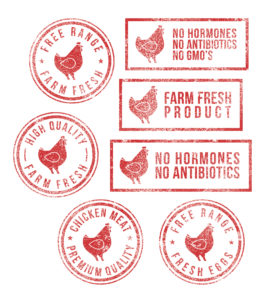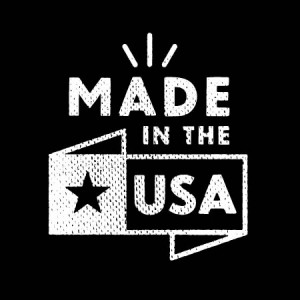** Foster Farms Prevail in Dismissing Class Action **

By: Brent E. Johnson
Resolving a politically-charged case based strictly on legal precedent and the evidence is no easy task. But as Elle Woods said (quoting Aristotle), “The law is reason free from passion.” (Granted, Elle disagreed with Ari.) Recently, a case involving the treatment of chicken broilers during the farming and slaughtering process posed that very dilemma to a superior court judge in Los Angeles. Leining v. Foster Poultry Farms, Inc., Cal. Super. Ct., No. BC588004.
The origins of this putative class action were both public and explosive. On June 17, 2015, reporters gathered at the Millennium Biltmore Hotel in downtown Los Angeles to view three minutes of video footage of animal cruelty perpetrated by Foster Poultry Farms, Inc. employees at two facilities in Fresno during the preceding two months. None other than noted animal welfare activist, vegetarian and retired “The Price Is Right” host, Bob Barker, narrated the video and spoke to the assembled reporters.
The video was shot by two undercover investigators from Mercy For Animals, a non-profit organization dedicated to advocating for animals generally and the prevention of farm animal cruelty specifically. The investigators applied for and obtained jobs with Foster Farms in order to surreptitiously record the footage. One of the investigators allegedly reported the animal abuse to his superior as well as phoned Foster Farms’ hotline to no avail.
Foster Farms was not the only party in Mercy For Animals’ crosshairs. Part of the focus of the presentation – and, in particular, Mr. Barker’s remarks – was the American Humane Association (“American Humane”), a non-profit whose website declares “is committed to ensuring the safety, welfare and well-being of animals.” American Humane pioneered, among other things, Hollywood’s animal welfare program, “No Animals Were Harmed.” In the case of farm animals, American Humane operates a voluntary certification program where farms can earn the American Humane Certified™ label through annual facility audits that demonstrate the farms’ compliance with American Humane’s animal welfare standards. Foster Farms had been Humane Certified™ for the two years preceding the May/June 2015 videotaped incidents. Mr. Barker informed the reporters that he had in years past been an advocate for American Humane until “I was suddenly made aware of what [American Humane] really [is], and I have absolutely no respect for [them]. I think they have failed miserably in their efforts to protect animals in the movie industry, and obviously they have failed miserably in any protection for animals in the food industry.” Mr. Barker went so far as to remark that American Humane once had been a beneficiary of his will — but given that he appears to be immortal, the loss of this status may not be a matter of consequence.
After the exposé at the Biltmore, Mercy For Animals filed a complaint with the Federal Trade Commission against both Foster Farms and American Humane claiming that the two entities had engaged in unfair and deceptive practices in connection with the advertising of Foster Farms chicken products under the Humane Certified™ label when the video footage showed that chickens were not being raised or slaughtered humanely. A week later, Foster Farms was sued for false advertising in a putative class action in Los Angeles County Superior Court. Leining v. Foster Poultry Farms, Inc., American Humane Association, BC588004 (LA Sup. Court, July 13, 2015). American Humane was added as a defendant by way of Plaintiff’s first amended complaint.
Foster Farms’ reaction to the publication of the video was swift. It suspended (and ultimately terminated) five employees allegedly involved in the animal cruelty and cooperated with the Fresno County Sheriff’s Department’s Agricultural Crimes Task Force. (At least one former employee was prosecuted.) In addition, Foster Farms reinforced “animal welfare training companywide and in its plants.” Finally, the Company implemented a state-of-the-art video monitoring system at its facilities that allowed auditors to review daily footage to assure employee compliance with Foster Farm’s animal welfare policies and procedures.
American Humane’s initial response to the Mercy For Animals video was surprise. Organization officials immediately met with Foster Farms to discuss the matter. After the meeting, American Humane’s spokesperson, Mark Stubis, stated, “Foster Farms has worked very hard to create a culture of humane treatment . . . . In the three years that we’ve been working with them, they have never failed an audit. This is an extremely rare situation for us.” Mr. Stubis continued, “The certification program can’t stop one or two employees who break those rules . . . . We certainly expect any certified farm to take immediate corrective action against anyone who abuses animals.” American Humane subsequently conducted unannounced inspections of Foster Farm’s poultry facilities and they passed. Foster Farms retained its status as Humane Certified™.
The FTC resolved the complaint filed by Mercy For Animals on April 28, 2016. In the FTC’s eyes, the issue revolved around its Guides Concerning the Use of Testimonials and Endorsements in Advertisements (“Endorsement Guides”). 16 C.F.R. § 255.4 “Because [American Humane] holds itself out as a bona fide independent certification organization, the [Humane Certified™] label on Foster Farms products arguably constitutes an endorsement, as defined by the FTC Guides Concerning the Use of Testimonials and Endorsements in Advertisements.” But despite its reference to the Endorsement Guides and its recitation of the general parameters of American Humane’s certification program, the FTC passed on the issue of whether or not the program resulted in a certification that “conveyed any express or implied representation that would be deceptive if made directly by the advertiser.” In the end, the FTC simply concluded that because Foster Farms took immediate remedial actions after learning of the video (suspending/terminating the involved employees, cooperating with law enforcement, and installing an expensive camera system) and passed American Humane’s inspections of the affected facilities, it would not recommend enforcement action “[d]espite concerns about the [American Humane] certification in light of the documented animal abuse . . . .”
Despite the FTC’s decision, the class action in Los Angeles raged on. The putative class was represented by Drinker Biddle & Reath, LLP (“DrinkerBiddle”) — a firm noted for its defense of consumer class actions. Perhaps not coincidentally, DrinkerBiddle represented the producers of The Price Is Right in past employment lawsuits brought by former Price is Right models.
The class action complaint did not place much emphasis on the Mercy For Animals video. Rather, the complaint’s gravamen was that American Humane’s certification standards were woefully inadequate and far from what a reasonable consumer would believe is the humane treatment of chickens – even chickens whose destiny is dinner. In Plaintiff’s graphic words, “(a) the chickens were hatched from eggs taken from facilities that are allowed to engage in forced-molting[1], maceration[2], beak-trimming[3], de-combing[4], toe amputation[5], food and water deprivation[6], and Noz Bonz practices[7]; (b) the chickens are shackled upside down by their feet for 90 seconds prior to slaughter as they are conveyed through processing facilities, electrically shocked before being rendered effectively unconscious, if they are at all, by such electric ‘stunning,’ and are then drowned and scalded, after having their necks cut, while they are, in at least some cases, still conscious; (c) the chickens suffer bruises and broken wings and bones; and (d) that the chickens spend their entire lives in chronic pain due to joint and leg deformities resulting from selective breeding for rapid growth, and live exclusively indoors in overcrowded poultry barns with high ammonia concentrations, many suffering from foot diseases, and unable to walk more than 5 feet without severe pain.” According to Plaintiff, because American Humane’s certification purportedly permitted these practices, the Humane Certified™ label was objectively false and misleading. [Editors’ Note: If Plaintiff’s allegation that some of the chickens were “drowned” – i.e., still breathing when they were placed in the scalding tank to remove their feathers – this would be a violation of United States Department of Agriculture regulations that would have presumably been discovered during Food Safety and Inspection Service inspections. The opinion does not reference any such evidence being presented to the court.]
On August 11, 2017, Foster Farms and American Humane filed for summary judgment Two weeks ago, the Honorable John Shepard Wiley, Jr. granted the defendants’ motion and dismissed the case. Judge Wiley’s opinion is an interesting and important read. It starts with the premise that American Humane’s certification is subjective. “The undisputed evidence in this record is that the word ‘humane’ is very vague.” Judge Wiley then moves to the controlling California authority, Hanberry v. Hearst Corp. (1969) 276 Cal.App.2d 680, a case where the plaintiff claimed that a pair of shoes bearing the “Good Housekeeping Seal of Approval” was slippery on vinyl flooring, which slipperiness caused her injury. The Hanberry Court concluded, according to Judge Wiley, that for a subjective product endorsement to be non-negligent, it must meet three requirements: (1) the endorser must be independent; (2) the endorser must take reasonable steps in conducting its evaluation; and (3) the evaluation must involve some degree of expertise. Id. at 686.
Judge Wiley dispatched with these requirements in short order. American Humane was independent from Foster Farms despite the fact that the Company allegedly pays American Humane $375,000 for its certification, which Plaintiff contended was “unusually high” (without evidentiary support such as comparisons to other similar organizations). As for Plaintiff’s assertion that American Humane was not independent because every certification program participant passed the organization’s audits, the court observed that the program is voluntary and, therefore, only those poultry farms that will pass the audits apply for the certification. “When the applicant pool is highly non-random, one cannot expect certification results to vary randomly.”
On the issue of reasonable steps, Judge Wiley dismissed Plaintiff’s assertion that conducting audits – as opposed to annual visits to each poultry facility – was required. “The Hanberry case condoned sampling, as is rational.” And the fact that American Humane gave poultry producers between seven and fourteen days’ notice of the audit did not create a “Potemkin Village” because “[n]otice was necessary to ensure there were actually chickens at that facility.”
Reading the opinion as a whole, though, it is clear that Plaintiff’s case ground ashore on the rocks of expert opinion. American Humane’s primary witness and Scientific Advisory Committee member was Dr. Joy Mench, who the Court described as “a leading expert on poultry who sits on virtually every scientific advisory board in the industry.” She was a professor at the University of Maryland and, later, the University of California Davis. Dr. Mench authored the only textbook in the field of poultry behavior and welfare. Most significant to Judge Wiley, Dr. Mench’s advisory committee work (including her work with American Humane) was truly independent – as it was without compensation other than travel expenses.
Pitted against Dr. Mench was Plaintiff’s expert, Leah Garces, USA Director for Compassion in World Farming and a member of the Board of Directors for Global Animal Partnership (https://www.compassioninfoodbusiness.com/our-work/meet-the-team/leah-garces/) whose testimony the Court struck in its entirety. Garces opined that American Humane’s standards are not “the best,” which Judge Wiley found irrelevant because American Humane does not represent that its standards are the best. Most tellingly, the Court characterized Plaintiff’s expert as follows: “Garces is a partisan advocate. . . . Garces is not a scholar or researcher. She has done no research and published no peer-reviewed articles or books. She has no scholarly or academic appointments or affiliations.” The Court’s final blow: “Garces’ method is ipse dixit: ‘I say it. Believe it.’ . . . Garces includes three vague sentences about her supposed professional experience, but nothing concrete distinguishes her from an opinionated but insubstantial dilettante.” Let’s face it, it’s hard to prevail when your expert’s testimony is dismissed as coming from a “dilettante” and excluded in its entirety.
What can we learn from the Foster Farms case? First, hire an expert with solid credentials. But putting aside the obvious, this case is interesting for what Defendants did not argue and what Plaintiff failed to argue. Although Dr. Mench testified that the word “humane” as it applies to the treatment of broiler chickens is “subjective” and the Court agreed, Defendants did not assert that the Humane Certified™ label was “puffery,” i.e., a claim that expresses subjective rather than objective views that no reasonable person would take literally. Newcal Indus., Inc. v. IKON Office Solutions, 513 F.3d 1038, 1053 (9th Cir. 2008). First, American Humane’s certification is an actual label that obviously has value or it wouldn’t exist. And second, consumers care that the animals they eat were treated humanely – even if their view of what “humane” means differs. For Plaintiff’s part, the question is: Where was the survey evidence demonstrating that, no matter how divergent consumer definitions of “humane” may be, American Humane’s standards do not meet their expectations? Granted, divergent views on the meaning of “humane” could prove challenging to class certification. But Plaintiff’s reliance on expert testimony regarding the expert’s personal definition of the term was unpersuasive – particularly when compared to the Defendants’ expert whose entire career has been focused on animal behavior and the humane treatment of same.
In the end, it appears that Plaintiff and her counsel relied on the “Parade of Horribles.” It didn’t work. The court analyzed the evidence that was before it and controlling California authority on commercial endorsements and determined that Plaintiff failed to meet her burden of showing a triable issue of fact that an independent, non-profit’s standard for the humane treatment of poultry, which was developed by members with expertise on the behavior of chickens and enforced through a reasonable auditing process, was somehow divergent from the reasonable consumer’s subjective view of the humane treatment of chickens.
Perhaps that is for the best. Consumer class actions are poor vehicles for recognizing and enforcing important substantive rights – including the rights of animals to humane treatment. Plaintiff’s complaint alleged that “the price of Foster Farms American Humane® Certified labeled chicken was $5.99/lb. whereas other chicken labeled ‘all natural’ but without the American Humane® Certified label was $2.99/lb. and other chicken labeled as ‘hatched, raised, harvested in the U.S.’ was $3.99/lb.” But would an advertising injunction and a $2-$3 refund per pound of chicken (up to ten pounds with receipt/5 pounds without) really have meant anything? The forum for such issues is not the Los Angeles County Superior Court, but Congress, the United States Department of Agriculture and state agriculture departments. Congress long ago enacted laws for the humane slaughter of livestock, 48 U.S.C. § 1901 et seq., and FSIS has promulgated detailed regulations under that law. But those regulations do not apply to poultry. With regard to chickens and other domestic fowl, FSIS regulations and inspections are directed to “good commercial practices,” rather than humane practices. Whether that changes as consumers demand and expect humane treatment of all animals raised for meat remains to be seen – but it’s certainly likely.
[1] Forced molting is the practice of forcing feather loss and regrowth, which increases egg production in mature hens. It is accomplished by withholding food (and sometimes water) from chickens for an extended period of time.
[2] Grinding up day-old male chicks because they will not lay eggs and are not suitable for meat production.
[3] Prevents chickens from injuriously pecking each other or themselves.
[4] De-combing is the removal of the chicken’s comb to limit the damage caused by frostbite or other injuries, to prevent the chicken’s head from becoming so heavy it interferes with eating or causes the head to sink into the chest, and to prevent injuries from other chickens or enclosures.
[5] Toe amputation occurs when a chicken’s toes are infected or suffer injury, such as frostbite.
[6] See footnote 1 on forced molting.
[7] According to the complaint, “the practice of piercing the nasal septum of young breeding roosters with a plastic stick to prevent them from accessing females’ food.”



 ** Maker of “Brain Training” Subscription Service Settles with FTC on Allegations that it did not Have the Science to Back Up its Claims of Cognitive Benefit ** . . .
** Maker of “Brain Training” Subscription Service Settles with FTC on Allegations that it did not Have the Science to Back Up its Claims of Cognitive Benefit ** . . . 